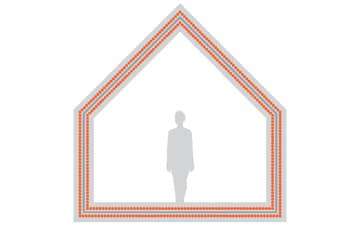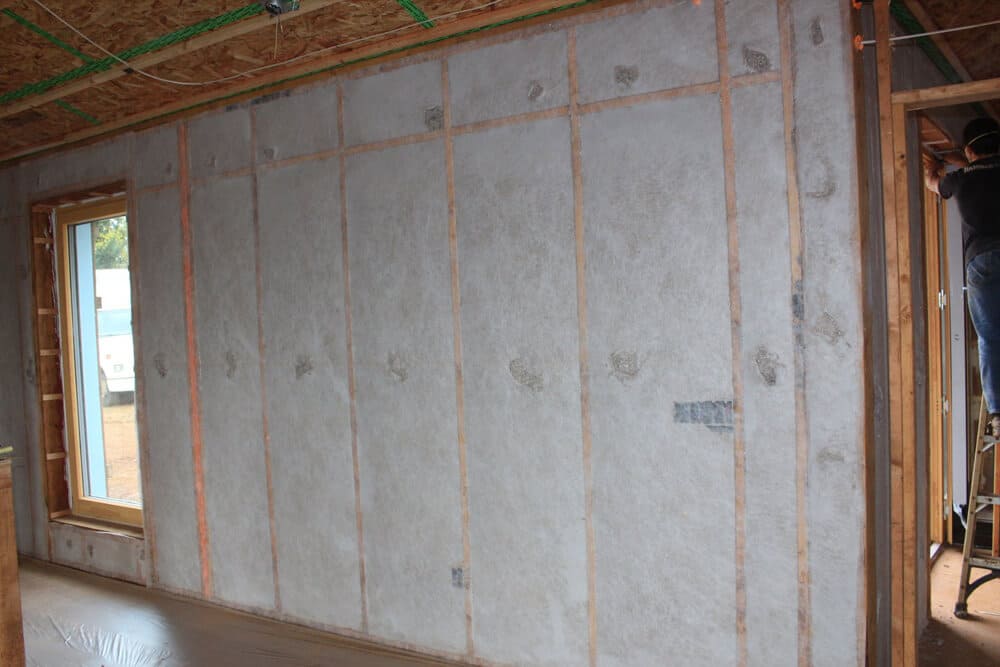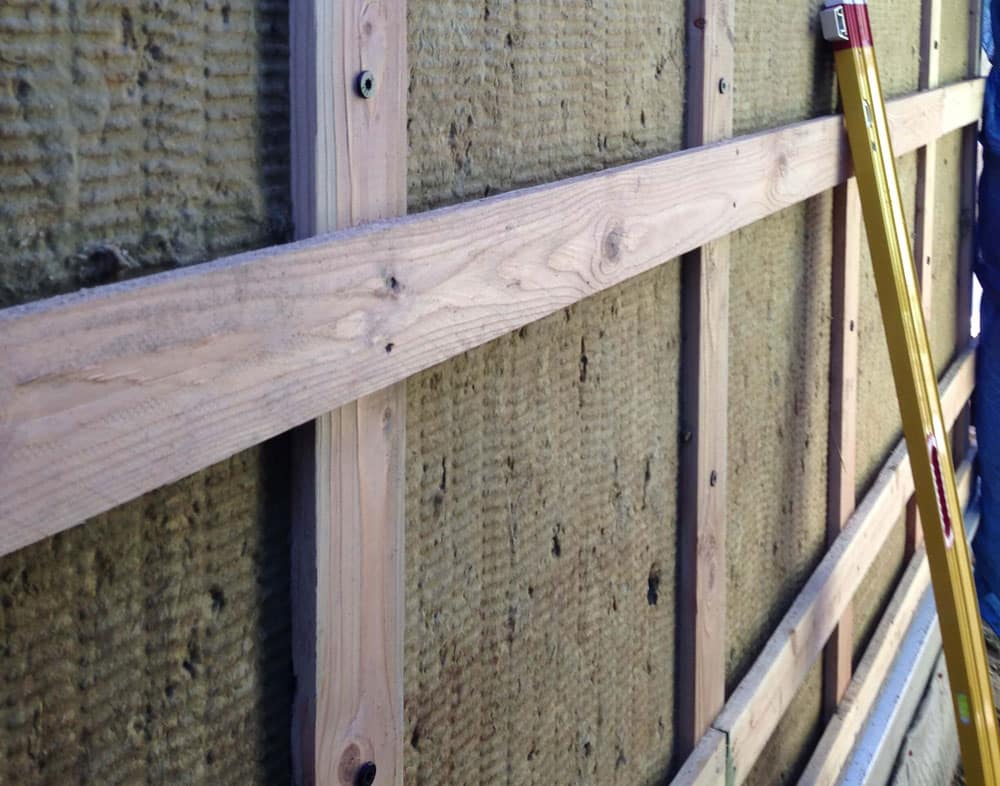
CONTINUOUS INSULATION
“Super-insulate” is a rallying cry in high performance building for good reason; by wrapping a thermal layer around the building envelope we isolate the building interior from outside temperatures. Small inputs of heating or cooling can then fine tune interior temperatures to comfortable levels while dramatically reducing energy consumption.

Cavity Fill Insulation at Madrona Passive House
The key to super-insulation is to make the thermal layer continuous, with no weak spots to allow thermal energy to escape across. To this end we start with advanced framing for our interior walls to reduce the number of studs (each of which is a thermal bridge) and increase the width of stud cavities so that more of the interior wall can be dedicated to insulation. We then add a monolithic layer of exterior insulation to complete the thermal break between inside and outside; the thermal bridging caused by the interior wall’s studs are broken by this continuous exterior insulation. The exterior insulation also warms structural sheathing sandwiched behind it. By keeping this vapor-constricting layer warm we mitigate the risk of condensation and dangerous moisture build-up inside our walls.

Exterior Insulation at Madrona Passive House
See both the Insulation and Exterior Continuous Insulation of Walls sections of our Best Practices Manual for notes about installation techniques.
